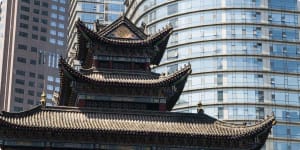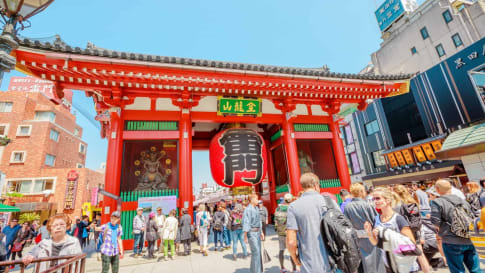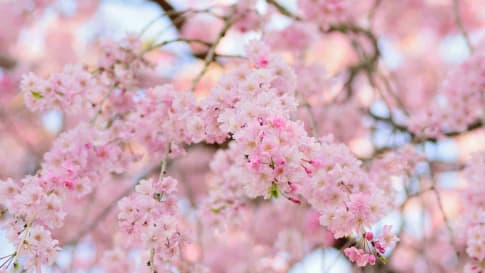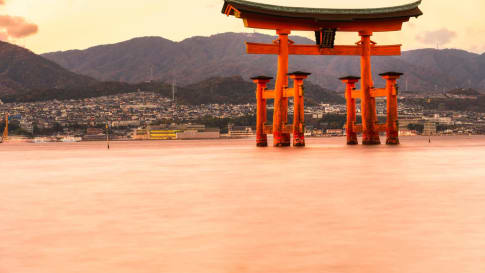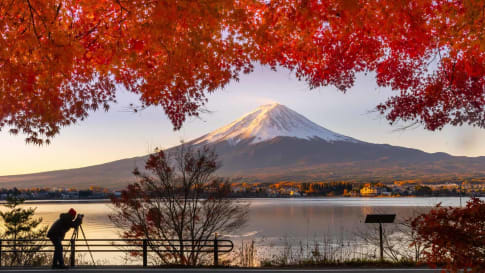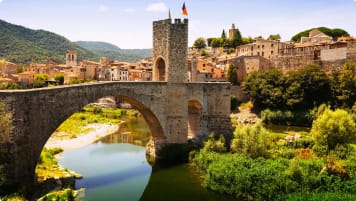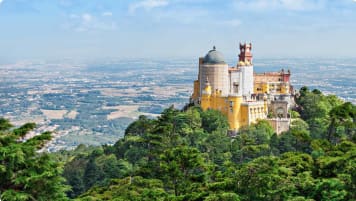Contemporary Japan | Small Group Tour
This small group tour organised by Odyssey Traveller, Contemporary Japan, will take you through modern life in this East Asian jewel. This contemporary tour for couples and solo travellers is an expedition through Japan’s major urban areas, beginning and ending in Japan’s tantalising capital, Tokyo. For the first 12 days we get our fill of Tokyo fashion, technology, culture, and sights.
From $12,970USD
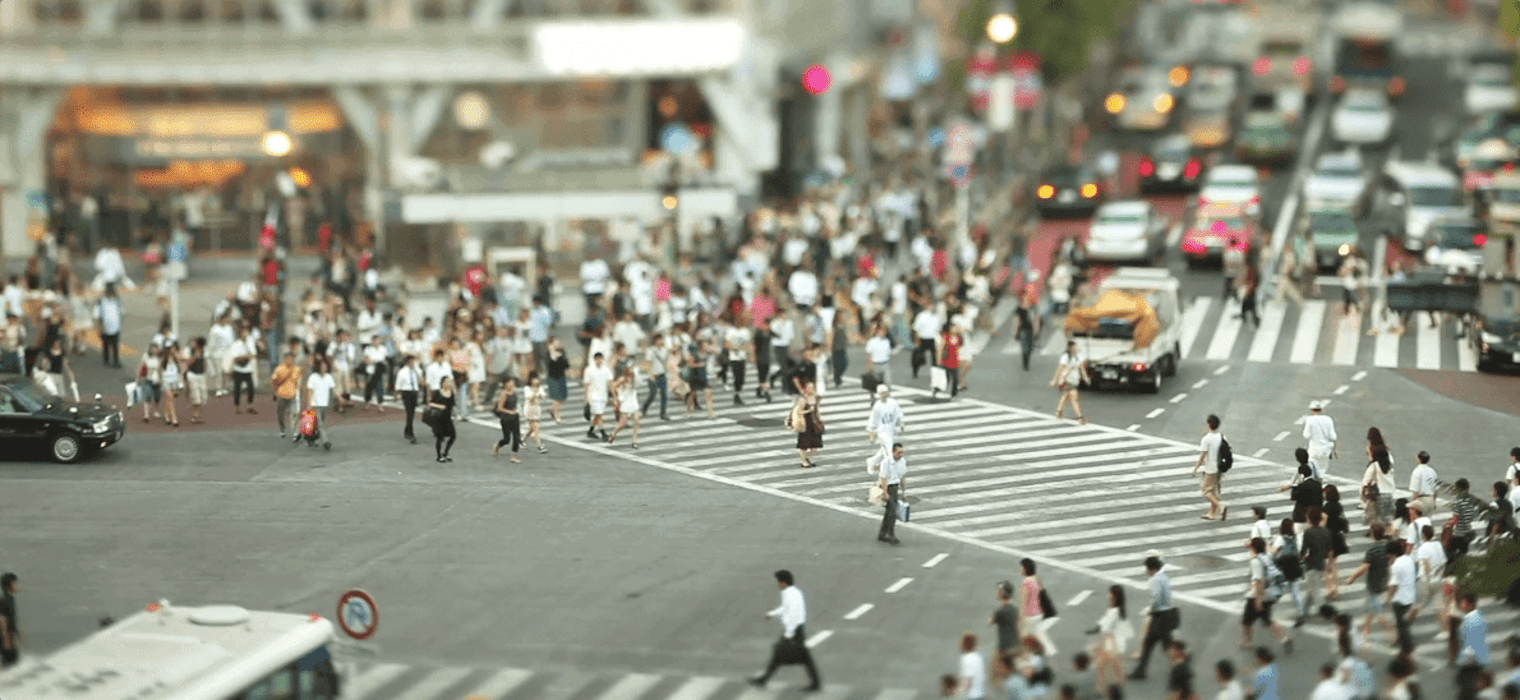
Highlights
- 1. Explore the painstakingly manicured Japanese gardens of the Nezu Institute of Fine Arts and Shinjuku Koen park.
- 2. Admire the perfect symbiosis of nature, contemporary art, and architecture on Naoshima, a beautiful island in the Inland Sea.
- 3. Gaze over Shimoda Bay, where the Americans arrived in 1854, ending centuries of isolation.
- 4. See new fashion trends created before our eyes in Harajuku and Shibuya in Tokyo.
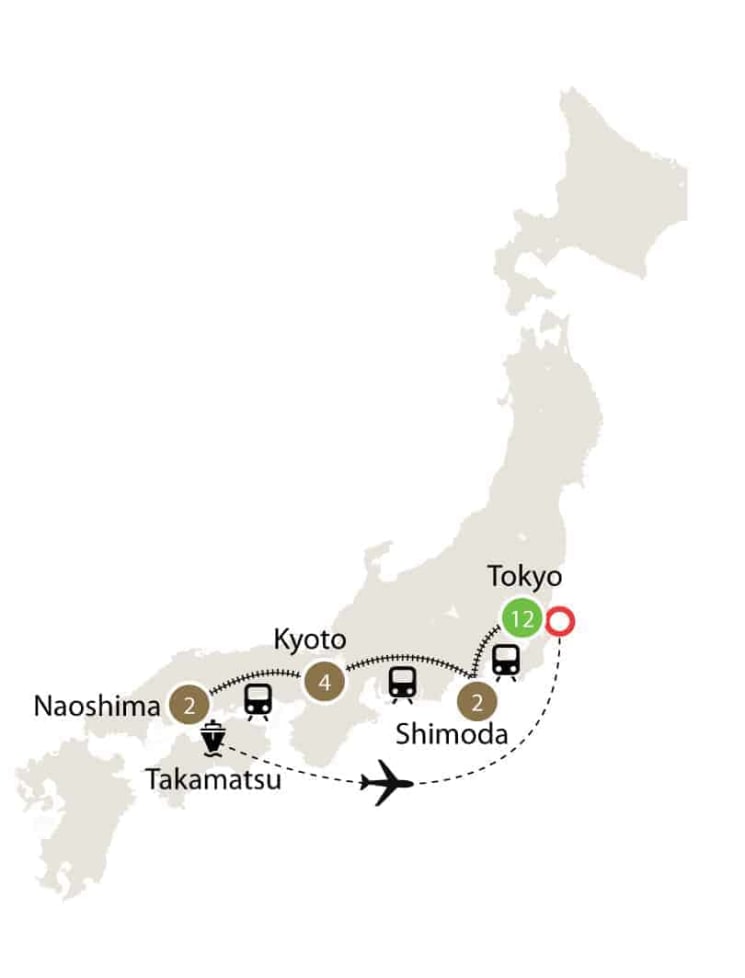
Departure Dates
| Departure Date | Price |
|---|---|
| 06 October 2025 Ends 26 October 2025 • 21 days $13,215 Twin $16,189 Single Available | Selected |
| 05 October 2026 Ends 25 October 2026 • days $13,515 Twin $16,519 Single Available |
Contemporary Japan Small Group Tour
Odyssey offers easy, convenient, and relaxed escorted small group tours within Japan and beyond into Asia. We explore Japan’s natural beauty, its ancient and Imperial heritage with the contemporary overlay, its World Heritage Sites, and world famous cities, all with some truly spectacular scenery along the way. This and more is all waiting to be explored on one of Odyssey’s small group tours of Japan, designed for the senior traveller, and led by experienced, and enthusiastic like minded people.
Odyssey Traveller's Contemporary Japan small group tour will take you through modern life in this East Asian jewel. This contemporary tour is an expedition through Japan's major urban areas, home to a staggering 91.6 percent of the country's population.
Our escorted tours begin and end in Japan's tantalising capital, Tokyo. For the first 12 days we get our fill of Tokyo fashion, technology, culture, and sights.
With Japan's long history reflected in the list of World heritage sites, ancient traditions such as Forest bathing and shoguns sit side-by-side with fast-paced urban living, and so we spend time as well in the ancient capital of Kyoto, exploring its gardens and temples. We visit the coastal city of Shimoda and spend a day on the art island of Naoshima.
Contemporary Japan Small Group Tour Itinerary
Tokyo
For most people, Tokyo is synonymous with Japan, the city's neon-lit skyscrapers, quirky fashion, cherry blossom and efficient bullet trains the first images that often come to mind. The Greater Tokyo Area is the most populous metropolitan area in the world with 37 million inhabitants. Our Tokyo tour weaves through its busy streets to discover its bright spots and unusual corners.
Highlights include a walking tour of Ginza, Tokyo's commercial heart, famous for its elegant streets and upscale shopping, dining and entertainment offerings; sushi breakfast in Tsukiji, the largest fish market in the world; a jaunt in Harajuku, centre of Tokyo's youth culture and an international fashion destination; and a shopping stop in Akihabara, the headquarters of everything related to electronics, anime, and manga.
We will take a break from the hustle and bustle of Tokyo by visiting the National Arts Centre, the Imperial Palace Gardens, the beautiful Imperial Shinto Shrine, and Ueno Park. We will also have a chance to explore the nearby city of Yokohama.
Shimoda
Shimoda is a picturesque coastal city in the south of the Izu Peninsula, iconic for being the landing place of Commodore Perry's ships in 1854, which marked the end of Japan's long period of isolation (Sakoku) and the beginning of diplomatic relations between the United States and Japan. Shimoda is famous among tourists for its beaches and hot springs, and we will enjoy a day of pampering here surrounded by the Pacific Ocean and bright green forests.
Kyoto
Kyoto was Japan's capital for more than a thousand years, and was instrumental in shaping Japan's unique identity and traditions. We will visit its gardens and temples, including the famous Kinkakuji Temple, also known as the Golden Pavilion as the structure's top two floors are completely covered in gold leaf. We will also visit former shogun residences, such as the Nijo Castle and Ninomaru Palace. We will enjoy a special Kyoto-style dinner with a performance by a maiko (an apprentice geisha ).
Naoshima
The final stop of the tour before heading back to Tokyo is the island of Naoshima. We will be staying at the island's top-level accommodation, Benesse House, a resort hotel and a modern art museum rolled into one, perched on a hill overlooking the sea.
You can learn more about Japan with Odyssey's country profile where all other tour departures are listed as well. We also listed 10 great books about Japan you might be interested in reading.
For more details about this tour, click the 'Top 5' or 'Itinerary' buttons above! If you're keen to experience this tour, please call or send an email. Or, to book, simply fill in the form on the right hand side of this page.
Articles about Japan
The following list of articles are either published by Odyssey Traveller or are carefully selected external sources to maximise senior traveller's knowledge and enjoyment of Japan when visiting:
Gallery
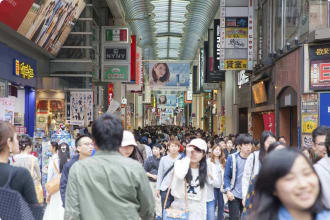
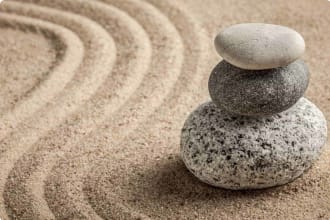
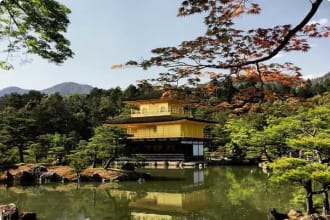
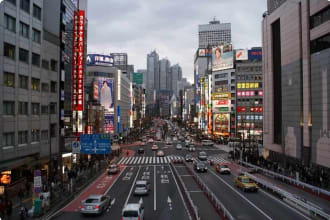
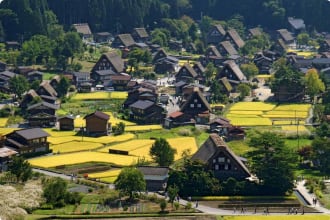
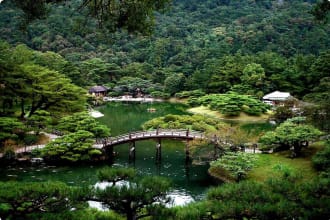
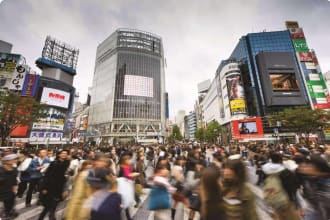
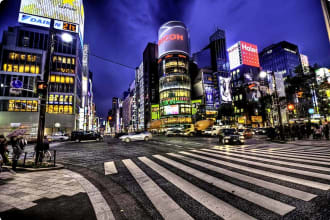
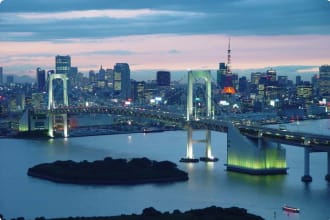
Itinerary
21 days
Day 1: Tokyo
Accommodation: 12 nights at The B Roppongi or similar.
Upon arrival make your own way to the hotel. In the evening we meet for a welcome dinner.
Day 2: Tokyo
Accommodation: The B Roppongi or similar.
Recent key developments in the entertainment district are the city-within-the-city phenomenon. We explore the Roppongi Hills and MidTown projects. The Tadao Ando designed 21/21 Design Sight Pavilion and Tokyo’s largest gallery, National Arts Centre, are taken in our stride. Established in January 2007, the National Art Centre, Tokyo, has a total of 14,000 square metres of exhibition space, the largest in Japan. We will have dinner at the National Arts Centre’s Brasserie Paul Bocuse Le Musee (French cuisine).
Day 3: Tokyo
Accommodation: The B Roppongi or similar.
We have a coach tour of the Hibiya where we visit the Frank Lloyd Wright designed Imperial Hotel Bar and the Diet (Parliament) areas, as well as a stroll in the Imperial Palace Gardens. We will learn the story of Marunouchi through the ages and its role as Tokyo’s Wall Street today, crowned by a walk through the painstakingly restored historic Tokyo Station. Lunch and dinner will be at local restaurants.
Day 4: Tokyo
Accommodation: The B Roppongi or similar.
Today, we will tour Ginza, the commercial heart of Tokyo for 500 years. For early risers, we have a sushi breakfast in Tsukiji, the largest fish market on the planet. We start at Nihonbashi, the once-iconic bridge between the working class quarters in the east and the aristocratic compounds in the west. We make our way west through the glittering department stores and flagship presences of
international luxury brands, ending in one of the futuristic skyscrapers of Shiodome with the best view over Tokyo Bay. We will have lunch and dinner at a local restaurant in the area.
Day 5: Tokyo
Accommodation: The B Roppongi or similar.
Shibuya is a live fashion laboratory. We walk through the narrow lanes of Jingumae, the prestigious Omotesando, also known as the Tokyo Champs Elysées, and Harajuku, an area famous all over the world for its kinky style and over-the-top boutiques. Fortunately we will have a spiritual break at the beautiful Imperial Shinto Shrine, in the middle of an urban forest. Lunch will be at a local restaurant in Shibuya and dinner will be at a local restaurant in Omotesando.
Day 6: Tokyo
Accommodation: The B Roppongi or similar.
We will immerse ourselves in traditional culture at the cool Nezu Institute of Fine Arts, where ancient Japanese arts and craft meets the cutting edge design from architect grandee Kengo Kuma. To top this all off, we will take a stroll through one of the most intricate Tokyo gardens surrounding the institute. We spend the afternoon in the exclusive Aoyama area with outstanding design and interiors from Herzog de Meuron, Tadao Ando, and other architects. Lunch will be at a café in Nezu Institute of Fine Arts (western café food) and dinner at a local restaurant in Aoyama.
Day 7: Tokyo
Accommodation: The B Roppongi or similar.
Today we will experience serenity in a Tokyo garden and have an electronics overdose. We have a preview of the latest trends in the burgeoning contemporary arts scene of Tokyo. Forget the pace of the city in the sublime traditional Korakuen garden. In the afternoon we get lost in Akihabara, also known as Electric Town, Tokyo’s epicentre of electronic gadgetry and the Otaku (Nerd) lifestyle. To round off the day we discover the latest avant-garde galleries in Kiyosumi-Shirakawa. Lunch will be at the garden’s rest area, Kanttokutei (traditional Japanese lunch) and dinner will be at a local restaurant.
Day 8: Tokyo
Accommodation: The B Roppongi or similar.
Ueno Park is surrounded by a string of national museums. We will pick one according to the group’s preference and the thematic temporary exhibitions of the moment. Asakusa is one of the more typical older residential neighbourhoods comprising an ancient temple complex. We will have a picnic lunch at Ueno Park. Dinner will be at a local restaurant in Asakusa.
Day 9: Tokyo
Accommodation: The B Roppongi or similar.
We will have a coach tour of the posh residential districts, where most tourists never go. Hiroo, Azabu, Shoto, Daikanyama, and Naka Meguro will have no secrets for us anymore. We might even spot a black Yakuza Mercedes. Lunch will be at a local restaurant in one of these suburbs. We will mingle with international Tokyo creatives at a Pecha Kucha evening, where they visually present their latest ideas with a drink in hand. We enjoy dinner at a local restaurant.
Day 10: Tokyo
Accommodation: The B Roppongi or similar.
We will get lost in the planet’s busiest railway interchange, then recover in the Shinjuku Gardens with an achingly beautiful Japanese section. In the afternoon, we dive into the labyrinth of the Manga/Cartoon community in the Nakano suburb. Lunch will be at a local restaurant in Shinjuku, and dinner will be at a local restaurant.
Day 11: Tokyo
Accommodation: The B Roppongi or similar.
Our last day in Tokyo is a tour on the aerial train, over the Rainbow Suspension Bridge to the futuristic Odaiba area, on a landfill in Tokyo Bay. Accordingly there are several museums and exhibitions focusing on the future of technology. Lunch and dinner will be at a local restaurant in Odaiba.
Day 12: Tokyo
Accommodation: The B Roppongi or similar.
We have a full-day coach tour of Yokohama, which is right next to the Tokyo metropolis. It is one of the largest ports in the world through where many of Japan’s exports pass. We will see the impressive ports infrastructure and also the historic area where the first foreigners were allowed to settle as of the 1870’s. Lunch and dinner today will be at a local restaurant in Yokohama.
Day 13: Shimoda
Accommodation: 2 nights at Garden Villa Shirahama or similar.
We take a train from Tokyo to Shimoda for a well-deserved break on the picturesque, mountainous Izu Peninsula, surrounded by the Pacific Ocean. Lunch will be on the way to Shimoda on the train or at a local restaurant in Shimoda. We will stroll through the historic small town where the first foreigners arrived in Japan by sea on May 25th, 1854 after 250 years of self-imposed isolation.
Our accommodation features western rooms including breakfast (set menu) and dinner (set menu or barbecue depending on weather) daily. Garden Villa Shirahama is a pension-type hotel, situated in south of Izu Penninsula, a 7-minutes walk to the well-known Shirahama Beach. Surrounded by clear blue ocean and bright green nature, we will have the pleasure of experiencing the hospitality of the owner family.
Day 14: Shimoda
Accommodation: Garden Villa Shirahama or similar.
We have the whole day at leisure. For those who are interested, Oyokocho Dori offers 9 different foot and hand baths free of charge. Alternatively, we can also visit the onsen ryokans and experience their thermal baths. (Depending on which ryokan we visit, it will cost anywhere from JPY500 to JPY1000 which is AU$8 – 15 equivalent per person which is payable directly at the ryokan. Please bring your own towels.)
Day 15: Kyoto
Accommodation: 4 nights at Kyoto Royal Hotel and Spa or similar.
We travel to Kyoto today by catching the local train and then express train. Although this tour focuses on the contemporary in Japan, the ancient historic capital Kyoto is too iconic to ignore! Lunch will be a bento boxed lunch on the train. Dinner will be at a local restaurant.
Day 16: Kyoto
Accommodation: Kyoto Royal Hotel and Spa or equivalent.
We have a whole day for sightseeing in Kyoto, visiting the gardens and temples of Kyoto. First we visit Golden Pavilion (Kinkakuji). Rokuon-ji Temple was originally built as a villa by Ashikaga Yoshimitsu. It was converted into a temple after Yoshimitsu’s death.This temple is famous in both Japan and abroad as a symbol of Kitayama culture. The Kinkaku, or “Golden Pavilion,” was built as the Shariden. Covered with gold, the image of the pavilion, which stands at the edge of Kyokochi pond, is reflected in the water. Major repair work performed in 1987 has further enhanced its brilliance.
We will also visit the Silver Temple (Ginkakuji). Built by Ashikaga Yoshimasa as a mountain villa in 1482, Jishoji Temple was later converted into a temple. With its simple, noble design, it is a National Treasure. It is also as Kannon-dono (Kannon Palace). Togudo (Budda Hall), also a National Treasure, is a relic of early shoin-zukuri, or library style. In the garden designated as a special place of scenic beauty) are the so-called “Sea of Silver Sand” and the “Moon Platform,” from which the light of the moon is said to reflect and shine on the Silver pavilion.
Lunch and dinner at a local restaurant in Kyoto.
Day 17: Kyoto
Accommodation: Kyoto Royal Hotel and Spa or equivalent.
We have another day of sightseeing in Kyoto. Our first stop is Kiyomizu Temple. Established in 778, this temple has continuously attracted worshipers from among the populace since the Heian Period as “Kiyomizu-Kannon.” The temple contains structures from the 15th to 17th centuries, including the Jishu-Jinja Shrine. The Main Hall (Hondo), built in the “stage” style, is noted for its beautiful background scenery which changes with the 4 seasons – including the cherry blossoms and greenery of spring, and the leaves of autumn. Built atop a precipice, the main hall, which is a National Treasure, is famous as the “Kiyomizu Stage”- affording a magnificent view of the city below. The temple precincts contain 15 buildings designated as Important Cultural Properties, including the inner Temple (Okunoin), Amida Budda Hall (Amidado), and the 3-tiered pagoda.
Next we will visit Nijo Castle, which was constructed in 1603 as the residence of Tokugawa Leyasu. Ninomaru Palace (a National Treasure), built in the shoin-zukuri (library-style) of samurai of the Momoyama Period, contains gorgeous paintings on the walls and sliding doors. It was here that the last shogun, Tomugawa Yoshinobu, restored the emperor to his ancient seat of power in 1867. Located at the site of the former Honmaru Palace and destroyed by fire in the 18th century, is the actual Honmaru Palace (an important Cultural Property), which was moved from the former Katsura-no-Miya Palace of the Imperial Palace, preserving the dignity of the original detached palace.
Lunch and dinner will be at a local restaurant in Kyoto.
Day 18: Kyoto
Accommodation: Kyoto Royal Hotel and Spa or similar.
We have a whole day free at leisure. We recommend a visit to the Miho Museum, which is located southeast of Kyoto, Japan, near the town of Shigaraki, in Shiga Prefecture. The museum was the dream of Mihoko Koyama (after whom it is named), the heiress to the Toyobo textile business, and one of the wealthiest women in Japan. The Miho Museum houses Mihoko Koyama’s private collection of Asian and Western antiques, as well as other pieces with an estimated value of between US$300 million to US$1 billion. There are over 2,000 pieces in total, of which approximately 250 are displayed at any one time. We will enjoy a special Kyoto-style dinner with a performance by an apprentice Geisha (Maikos).
Day 19: Naoshima
Accommodation: 2 nights at Benesse House.
We travel to Naoshima today by catching trains and ferries. Lunch will be taken enroute to Naoshima.
Our accommodation for the next 2 nights is Benesse House. The main attraction of the Benesse House is its modern art museum, located on a hill overlooking the sea. This museum displays work created by many different artists from both Japan and abroad, that was inspired by the natural surroundings of Naoshima and the architecture on the island. Overnight guests staying at the Museum and Oval buildings can enjoy 24-hour access to the museum.
The Benesse House has other facilities including restaurants, cafes, shops, and a spa that are open to staying guests as well as day visitors. Hotel guests have the added privileges of exclusive restaurants and after-hours access to the museum.
We will stay in western twin rooms with breakfast and dinner daily. The Benesse House is on the southern coast of Naoshima Island. The complex is the centrepiece of the Benesse Corporation’s art facilities on the island and consists of 4 buildings: the Museum, Oval, Park, and Beach, all designed by star architect Ando Tadao. Each building features its own unique artwork and guest rooms.
Day 20: Naoshima
Accommodation: Benesse House or similar.
We have a whole day at leisure at Naoshima. Be surprised by the works of Nikki de St. Phalle, James Turrell, Walter de Maria and other international artists, and how they are integrated in the beautiful nature of Naoshima Island.
There is an opportunity to visit neighbouring islands such as Teshima or Inujima.
Day 21: Takamatsu to Tokyo
Today we travel by ferry to Takamatsu. From there, we board our flight to Tokyo where our tour concludes. It is expected we will be back at Tokyo airport by 18:00 pm.
Tour Notes
- Itineraries may change if flight schedules, site availability, and other inclusions have to be amended prior to departure.
Includes / Excludes
What’s included in our Tour
- 20 nights of hotel accommodation.
- 20 breakfasts, 17 lunches, and 20 dinners.
- All excursions, sightseeing, and entrance fees as per the itinerary.
- All rail travel on the bullet train, express trains, and local services.
- Modern, air-conditioned coaches throughout and other modes of transport as per the itinerary.
- Domestic flight from Takamatsu Airport to Haneda Airport (Tokyo).
- Program leader for the duration of the tour.
- Detailed preparatory material.
- Gratuities and necessary tips.
What’s not included in our Tour
- International airfares and departure taxes.
- Comprehensive travel insurance.
- Items of a personal nature such as telephone calls and laundry.
Participants must be able to carry their own luggage, climb and descend stairs, be in good health, mobile and able to participate in 3-5 hours of physical activity per day, the equivalent of walking / hiking up to 8 kilometers per day on uneven ground.
Book now
Make it a private tour
Easing your journey
Crossing international borders with restrictions
The list of requirements to travel internationally has changed and will continue to change for several years. Odyssey is here to assist you in managing your way through these requirements:
For more information see our Crossing international borders with restrictions page.
Book With Confidence
If less than 30 days before your tour starts you are unable to travel as a result of Government travel restrictions, Odyssey Traveller will assist you with a date change, provide you with a credit or process a refund for your booking less any non-recoverable costs.
See Terms and conditions for details.
Peace of Mind Travel
The safety of our travellers, tour leader, local guide and support staff has always been our top priority and with the new guidelines for public health and safety for keeping safe for destinations around the world, we’ve developed our plan to give you peace of mind when travelling with us.
See Peace of Mind Travel for details.
Reading List Download PDF
A Geek in Japan: Discovering the Land of Manga, Anime, Zen, and the Tea Ceremony
Hector Garcia
For every fan of manga, anime, J-pop, or Zen, A Geek in Japan is a hip, smart and concise guide to the land that is their source.
Comprehensive and well informed, it covers a wide array of topics in short articles accompanied by sidebars and numerous photographs, providing a lively digest of the society and culture of Japan. Designed to appeal to the generations of Westerners who grew up on Pokemon, manga and video games, A Geek in Japan reinvents the culture guide for readers in the Internet age.
Spotlighting the originality and creativity of the Japanese, debunking myths about them, and answering nagging questions like why they're so fond of robots, author Hector Garcia has created the perfect book for the growing ranks of Japanophiles in this inspired, insightful and highly informative guide.
Modern Japan: A Very Short Introduction (Very Short Introductions)
Christopher Goto-Jones
Japan is arguably today's most successful industrial economy, combining almost unprecedented affluence with social stability and apparent harmony. Japanese goods and cultural products are consumed all over the world, ranging from animated movies and computer games all the way through to cars, semiconductors, and management techniques. In many ways, Japan is an icon of the modern world, and yet it remains something of an enigma to many, who see it as a confusing
montage of the alien and the familiar, the ancient and modern. The aim of this Very Short Introduction is to explode the myths and explore the reality of modern Japan - by taking a concise look at its history, economy, politics, and culture.
Bending Adversity: Japan and the Art of Survival
David Pilling
A pacy, fresh and surprising portrait of Japan and the Japanese - from David Pilling, award-winning writer and Asia Editor of the Financial Times
Despite years of stagnation, Japan remains one of the world's largest economies and a country which exerts a remarkable cultural fascination. David Pilling's new book is an entertaining, deeply knowledgeable and surprising analysis of a group of islands which have shown great resilience, both in the face of financial distress and when confronted with the overwhelming disaster of the 2011 earthquake.
The resulting tsunami, which killed some 19,000 people, and nuclear catastrophe highlighted both the deeply impressive practical resilience of ordinary Japanese and a political culture of extraordinary carelessness and arrogance. Pilling describes the emergency and its aftermath, but then writes far more broadly about many aspects of Japan which are little known to outsiders and which do so much to explain these contradictory responses to the earthquake. Bending Adversity is a superb work of reportage and the essential book even for those who already feel they know the country well.
For Fukui's Sake: Two years in rural Japan
Sam Baldwin
Far from the high-tech, high-rise of the super-cities, there lies another Japan.
A Japan where snakes slither down school corridors, where bears prowl dark forests and where Westerners are still regarded as curious creatures. Welcome to the world of the inaka – the Japanese countryside.
Unhappily employed in the UK, Sam Baldwin decides to make a big change. Saying sayonara to laboratory life, he takes a job as an English teacher in a small, rural Japanese town that no one – the Japanese included – has ever heard of.
Arriving in Fukui, where there’s ‘little reason to linger’ according to the guidebook, at first he wonders why he left England. But as he slowly settles in to his unfamiliar new home, Sam befriends a colourful cast of locals and begins to discover the secrets of this little known region.
Helped by headmasters, housewives and Himalayan mountain climbers, he immerses himself in a Japan still clutching its pastoral past and uncovers a landscape of lonely lakes, rice fields and lush mountain forests. Joining a master drummer’s taiko class, skiing over paddies and learning how to sharpen samurai swords, along the way Sam encounters farmers, fishermen and foreigners behaving badly.
Exploring Japan’s culture and cuisine, as well as its wild places and wildlife, For Fukui’s Sake is an adventurous, humorous and sometimes poignant insight into the frustrations and fascinations that face an outsider living in small town, backcountry Japan.
A Concise History of Japan (Cambridge Concise Histories)
Brett L. Walker
To this day, Japan's modern ascendancy challenges many assumptions about world history, particularly theories regarding the rise of the west and why the modern world looks the way it does. In this engaging new history, Brett L. Walker tackles key themes regarding Japan's relationships with its minorities, state and economic development, and the uses of science and medicine. The book begins by tracing the country's early history through archaeological remains, before proceeding to explore life in the imperial court, the rise of the samurai, civil conflict, encounters with Europe, and the advent of modernity and empire. Integrating the pageantry of a unique nation's history with today's environmental concerns, Walker's vibrant and accessible new narrative then follows Japan's ascension from the ashes of World War II into the thriving nation of today. It is a history for our times, posing important questions regarding how we should situate a nation's history in an age of environmental and climatological uncertainties.
An Introduction to Japanese Society
Yoshio Sugimoto
Now in its fourth edition, An Introduction to Japanese Society remains essential reading for students of Japanese society. Internationally renowned scholar Yoshio Sugimoto uses both English and Japanese sources to update and expand upon his original narrative in this sophisticated yet highly readable text. This book explores the breadth and diversity of Japanese society, with chapters covering class, geographical and generational variation, work, education, gender, minorities, popular culture and the establishment. Updates include an exploration of the 'Cool Japan' phenomenon and the explosion of Japanese culture overseas. This edition also features the latest research into Japanese society, updated statistical data, and coverage of recent events including the 2011 earthquake and tsunami, and the change in government. Written in a clear and engaging style, An Introduction to Japanese Society provides an insight into all aspects of a diverse and ever-evolving contemporary Japan.
Lost Japan
Alex Kerr
An enchanting and fascinating insight into Japanese landscape, culture, history and future.
Originally written in Japanese, this passionate, vividly personal book draws on the author's experiences in Japan over thirty years. Alex Kerr brings to life the ritualized world of Kabuki, retraces his initiation into Tokyo's boardrooms during the heady Bubble Years, and tells the story of the hidden valley that became his home.
But the book is not just a love letter. Haunted throughout by nostalgia for the Japan of old, Kerr's book is part paean to that great country and culture, part epitaph in the face of contemporary Japan's environmental and cultural destruction.
Winner of Japan's 1994 Shincho Gakugei Literature Prize.
Alex Kerr is an American writer, antiques collector and Japanologist. Lost Japan is his most famous work. He was the first foreigner to be awarded the Shincho Gakugei Literature Prize for the best work of non-fiction published in Japan.
